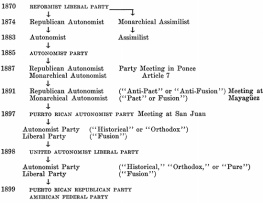Copyright, 1954, by
THE UNIVERSITY OF NORTH CAROLINA PRESS
CMT
PUBLISHER'S NOTE
This book was originally published on May 16, 1954. On the following day the United States Supreme Court handed down a unanimous decision outlawing segregation in the public schools.
This edition contains the full text of the Court decision (except for technical footnotes) and has been revised to bring the legal history of segregation up to date.
First Edition May,.........................1954
Second Edition June,....................1954
MANUFACTURED IN THE UNITED STATES OF AMERICA
Van Rees Press New York
Foreword
THE STUDIES UPON WHICH THIS VOLUME IS BASED HAD THEIR inception in a series of conferences held by the Fund for the Advancement of Education in the course of its normal business of seeking out educational areas which might benefit from an infusion of Ford Foundation money. The Fund soon came, as had many a philanthropy before it, to the peculiar problems involved in the schooling of the American Negro. And there, in the late spring and early summer of 1953, the Fund's officers found unanimous agreement among the educators they consultedwhite and Negro, Southern and non-Southernthat there was an urgent need for a new and comprehensive look at the structure of bi-racial education in the United States.
The need has existed for a long time but is more pressing now than ever. States and communities where segregated schools were long the rule have in recent years been making important adjustments toward equalizing educational opportunities and in some cases toward integrating children of different races. This complex process of adjustment has had its reflection in the budget and policy debates of legislatures, in the deliberations of local school boards, and in a long line of cases before the courts. The most recent and perhaps most publicized of such cases were pending before the United States Supreme Court when this research project began. Subsequent events have made it clear that the courts of the land will continue to play an important role in this adjustment process. The final burden and responsibility for our schools rests, however, upon the local citizens who operate and support them. These people need and deserve all the help they can get, and one of their greatest needs is for objective facts which will guide them toward wise decisions in the face of difficult problems. It was primarily with the needs of these practical decision-makers in the field of education in view that the directors and officers of the Fund for the Advancement of Education decided to support the present study.
At the outset this statement of principle was adopted:
1. The Fund will not undertake to argue the case for or against segregation in public education, and in no sense will it become involved as an advocate on either side of the issues before the Supreme Court.
2. Aside from the possible consequences of this litigation, there is a need for an objective re-appraisal of the bi-racial aspects of our educational system. This should take into account the great shifting of population in recent years, the rapidly improving economic status of the region most affected, as well as any significant changes in prevailing attitudes and practices.
3. Since no single institution or agency is equipped to handle such a study within the time limitation involved, the Fund will bring together a temporary research staff consisting of persons who are specially qualified to examine the various aspects of the educational structure.
The undertaking of research on such a scale directly under the aegis of the Fund is an unorthodox procedure for this or any other foundation. Yet it had the great advantage of drawing upon the experience and talents of men and women who had spent many years in the study of various aspects of this complex area of human relationships. Perhaps in no other way could such a body of research have been pooled in such a relatively short time.
This volume, then, is a summary and interpretation of the findings of the more than forty scholars who labored at one time or another in what came to be called the Ashmore Project. It will be followed by three additional works to be published by the University of North Carolina Press which will present in greater detail the basic material thus gathered. These are: an essentially sociological work based upon field studies of communities in transition from segregation to integration in the public schools, to be edited by Professor Robin Williams of Cornell University; a collection of field studies of Southern institutions of higher education which have lately admitted Negroes, to be edited by Professor Guy B. Johnson of the University of North Carolina; and a composite of the public school administration, population, and economic studies to be jointly edited by Mr. Philip Hammer, who served the project as research director, and Professors Truman Pierce of George Peabody College for Teachers, John Maclachlan of the University of Florida, and Ernst Swanson of Emory University. In addition, much of the basic legal research undertaken for the project by Dean Robert A. Leflar and Professor Wylie H. Davis of the University of Arkansas Law School already has been published in the Harvard Law Review.
This volume and those that follow it are intended to bring into focus the dimensions and the nature of a complex educational problem that in many ways provides a significant test of American democracy. The ultimate solution of that problem will rest with the men and women who make and execute public school policy in thousands of local school districts, and their actions will be conditioned by the degree of understanding of the general public which supports their efforts with its tax dollars. If this project serves to assist them in their task the Fund for the Advancement of Education will feel that it has wisely invested a portion of the risk capital of American education with which it is entrusted.
My colleagues join me in thanking Mr. Harry Ashmore for his wise direction of the project and his skillful preparation of this report. We wish also to express our gratitude to Mr. Philip Hammer and his fellow researchers for their tireless and competent efforts.
OWEN J. ROBERTS,
Chairman of the Board of
Directors,
The Fund for the
Advancement of Education
Philadelphia, Pennsylvania
Introduction
IT WOULD SEEM TO BE A SIMPLE TASK TO TAKE THE OUTSIDE dimensions of the dual public school system which has served whites and Negroes in the United States through all our history, and not much more difficult to appraise its general effects upon public education.
In practice, however, this has turned out to be an enormously complex assignment, one that has taxed the skills of the scholars who performed the necessary hard labor and often perplexed the newspaper editor who came finally to write this summary report of their findings.
In the first placeand for several reasons this is an important consideration to bear in mindthe structure of public education in the United States is almost as decentralized as the nation's system of municipal government. National and state agencies set its standards, or attempt to, but final administrative authority is vested in thousands of local school districts and exercised by hundreds of thousands of elected school board members and appointed officials. There is wide variety in the methods by which these agencies keep their accounts and, although formalized reports on their activities drift upward through fixed channels, there are no absolutes by which they can be measured or compared from state to state.





